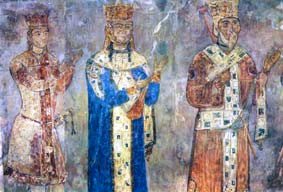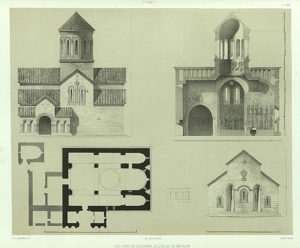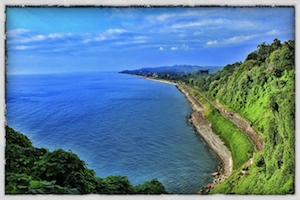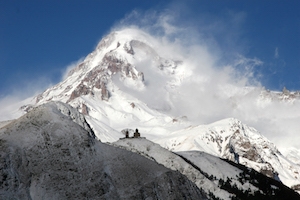Sometimes in Georgia, it's hard to get any work done. The culture demands a more nuanced, flexible approach to life than just adhering to 8-hour work days. Here's one example that came up. Late Sunday night, a friend called and said,
"Did you know that tomorrow is the feast day of the Betania saints? There will be a liturgy in the morning, and they're asking for chanters. Can you come?"
Of course I can come! I hadn't been back in years. How could one turn down such an opportunity?
Monday, February 21st. Four of us chanters met at 8am to begin our journey. After winding around for an hour in the hills, we finally skidded and slid down the treacherous ice patches passing for a road to the monastery (the car would never make it out that day, we had to get other rides home). The sun gleamed off the snow, and the bright yellow sandstone of the church. I hadn't forgotten any details, but the beauty of the place overwhelmed me once again.
In 2005 and 2006 I sang the Easter all-night-vigil service there, and my memories of my own spiritual journey at the time are still strong. I had memorized several chants there in all three voice parts, including aghdgomisa dghe ars, the first heirmos of Pascha, a chant I still sing often.
As we still had a half hour until the service, we stomped around outside in the snow, trying to stay warm, throwing a few snowballs, and reading the captions on the graves of the saints buried just outside the East end of the monastery. During the early decades of the Soviet period, Ioane Maisuradze (†1957) and Giorgi-Ioane Mkheidze (†1960) lived at the monastery as monks, continued the work of rebuilding the failing cupola, and became revered spiritual men in their later years. To read about their lives, see this link. Today we honor them with our chants, and ask for their intercession.

Betania Monastery is located about 8 miles up a forested ravine outside of Tbilisi, but the old footpath has long since over grown from lack of use. The monastery is situated such that enemies couldn't see it from any of the surrounding hills, tucked near to the bottom of the steep ravine, so it was spared many of the ravages of Tbilisi over the centuries. It contains one of the rare original frescoes of the 11th-12th century monarch, Queen Tamar.
The bell started ringing. Making our way inside the dim lit church, one couldn't help but notice the two large wooden sarcophagi in the middle of the sanctuary space (see video below). A beam of light from the south apse clerestory windows shone down across them. The relics of the two saints were covered with embroidered white shrouds, flowers draped on all sides.

We chanted the service, our bones numb from the chill penetrating our feet from the unheated flagstones. During breaks in the 4-hour liturgy, we filed outside to stamp our feet and praise the sun for warming our frozen bodies. Outside it was probably 30 degrees Fahrenheit, inside probably 20. At the end of liturgy, we venerated the relics, then filed outside for a paraklesis, a small addendum service, which we sang outside each wall of the church (see videos above).
* * * * * * * * *
To get to Betania, rent a taxi driver as the road is impossible to find on one's own. A former road through Tskneti is under repair. The only road leads from Freedom Square up to Kojori, around towards Manglisi, above Kiketi, and down the Betania road. The Betania road needs 4x4 capability, otherwise it is a one hour walk from the Kiketi road above. Do not attempt to drive the road in icy or muddy conditions.
UPDATE: As of January, 2020, the road through Tskneti is now re-opened to traffic. This is again the quickest and easiest way to get to Betania Monastery from Tbilisi.














Leave a Reply